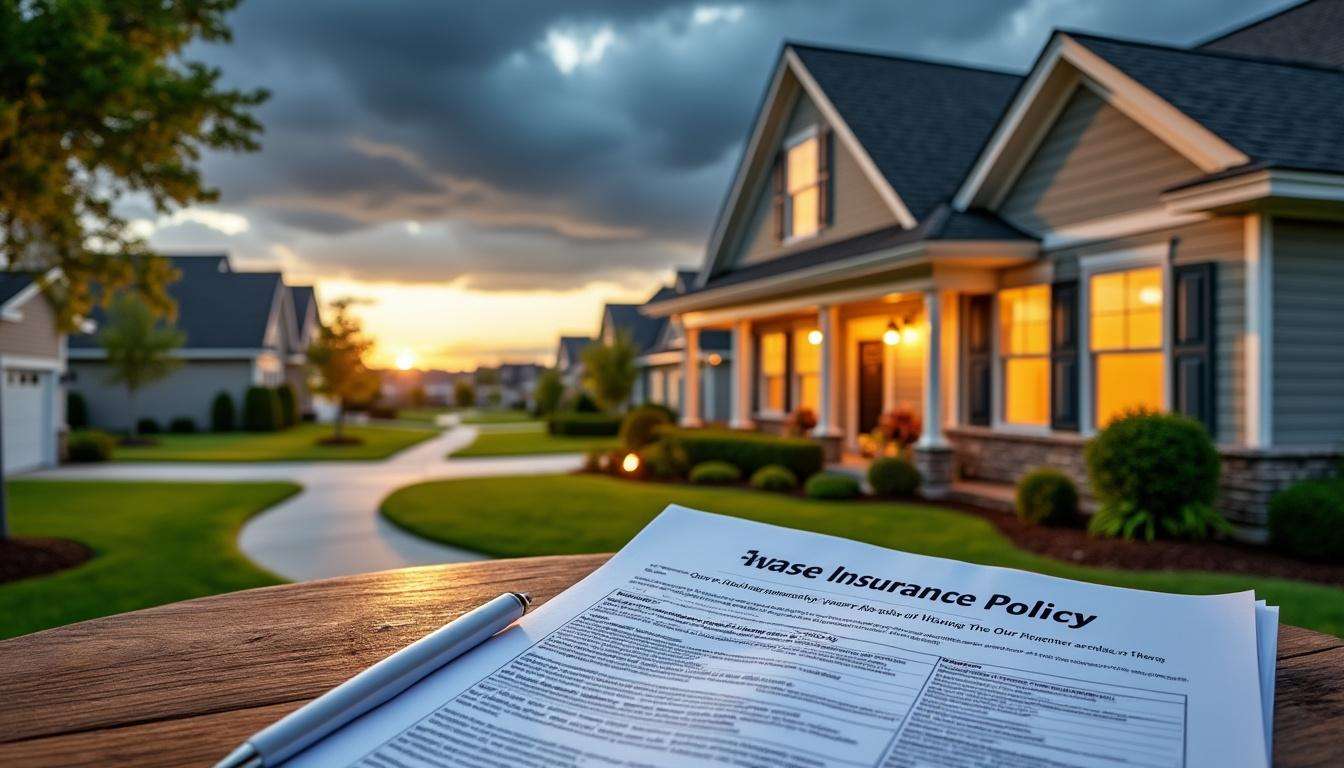As climate volatility intensifies in 2025, homeowners face mounting threats from flooding, storms, and extreme weather events. The Tri-State area’s recent relentless rains, which devastated North Plainfield with basement floods and structural damages, highlight a critical reality: having the right home insurance isn’t just advisable—it’s essential. Understanding your insurance policy intricacies, documenting possessions meticulously, and proactively choosing coverage options can dramatically influence your financial protection and recovery after a calamity.
Comprehensive Home Insurance Coverage Tips To Prepare For Weather Crises
Securing your home against natural disasters demands an informed approach to insurance coverage. While many policies appear broad, critical gaps often exist regarding flood and storm damage.
Key considerations for adequate home insurance protection:
- Thoroughly review your homeowner’s policy, especially details on roof seepage, sump pump failures, and foundation water intrusion.
- Obtain flood insurance separately, as it is typically not included in standard policies; expect annual premiums around $1,000 in risk-prone areas.
- Consider policies from reliable insurers like State Farm, Allstate, Farmers Insurance, and Liberty Mutual who offer comprehensive endorsements.
- Create a precise inventory of your possessions through room-by-room videos and photos, narrating damages clearly to streamline claims.
- Regularly update your insurance to capture new assets and to reflect changes in home value or local risks, adjusting deductibles and limits accordingly.
- Explore options through companies like Geico, Progressive, Nationwide, and American Family Insurance to compare flood and property coverage features and costs.
This proactive vigilance ensures you’re financially prepared for unpredictable weather events and can assert your rightful compensation without costly disputes.
How Documenting Your Home’s Inventory Enhances Claims Efficiency
Phil Maltaghati of United Public Adjusters emphasizes that detailed documentation is your strongest ally in recovering losses after disasters. Walking through your home with a camera, recording videos room-by-room, and explaining the contents allows you to substantiate claims quickly.
- Create both video and photographic records of valuables including electronics, artwork, and collectibles.
- Keep copies of receipts and appraisals for high-value items.
- Store digital copies in secure cloud storage accessible post-disaster.
Such careful preparation can differentiate between a partial reimbursement and a full settlement, a difference that’s especially critical when covered by major insurers like Travelers Insurance, Chubb Insurance, or others.
Adjusting Deductibles and Coverage Limits Amid Rising Weather Risks
The nature of damage—whether water intrusion through roofs, foundation seepage, or drain backflows—affects policy coverage. Understanding these distinctions can protect you financially, but demands a read of even the fine print of your contract.
- Increase coverage limits to match rebuilding costs amplified by inflation and supply shortages.
- Adjust deductibles strategically to balance premium affordability with out-of-pocket exposure.
- Ensure coverage includes policy riders for flood, sump pump failure, and water backup protection.
- Consult with agents from companies such as Chubb Insurance, Nationwide, or Liberty Mutual to tailor policies specific to your geographic risks.
By doing so, you remain ahead of weather emergencies and optimize your protection against rising insurance claims costs caused by severe weather events.
Smart Strategies To Reduce Home Insurance Costs Without Sacrificing Coverage
Cutting costs on home insurance doesn’t mean leaving yourself vulnerable. Identifying discounts and optimizing policy terms can maintain robust coverage affordably. For example, bundling policies with providers like Progressive or Allstate often yields savings.
- Install weather-resistant upgrades such as impact-resistant roofing or reinforced windows to qualify for premium discounts.
- Maintain updated security systems to lower theft risk, attracting incentives from companies like Geico or State Farm.
- Review and prune unnecessary riders or duplicate coverages periodically.
- Investigate tax credits and local rebates tied to disaster mitigation measures.
Effective money-saving plans integrate well with emergency preparedness insights outlined in resources like our guide to cutting homeowners insurance costs and hail damage prevention tips.
Leveraging Insurance Knowledge During and After Weather Emergencies
Being well-versed in your insurance details is invaluable in stressful moments following an event. Prompt filing of claims, backed with your video inventories, accelerates settlements.
- Contact your insurer immediately after damage occurs.
- Submit the inventory evidence and keep copies of all correspondence.
- Engage a public adjuster if claims are disputed or complicated.
- Stay abreast with evolving policies, including cyber insurance impacts that could intersect with home damages via online documentation and identity protection — learn more at Cyber Insurance Strategies 2025.
Such savvy management secures your financial resilience and peace of mind amid unpredictable natural disasters.
Additional Resources For Holistic Insurance Protection
Integrate broader insurance approaches to safeguard your entire lifestyle. Whether considering expat travel insurance for extended absence from home or monitoring health insurance amid heat waves described in July Health Insurance Heat Tips, comprehensive coverage planning is vital.
Frequently Asked Questions About Insurance Preparation For Weather Disasters
- Does standard home insurance cover flood damage?
Typically, flood damage requires a separate flood insurance policy. Standard policies usually exclude flooding from external water sources. - How often should I update my home inventory for insurance?
Update it annually or after significant purchases or renovations to ensure accurate valuations. - Are there affordable options for flood insurance despite premium costs?
Yes, shopping across providers like State Farm, Travelers Insurance, and others can help find competitive rates, and investing in mitigation measures can lower premiums. - Can I claim for damages caused by roof leaks under my homeowner’s policy?
If the leak results from covered perils like sudden storms, it often is covered; gradual damage usually is not. - What steps improve my chances of a successful insurance claim?
Maintain detailed proof of possessions, report damages promptly, and understand your policy’s nuances to avoid surprises.


